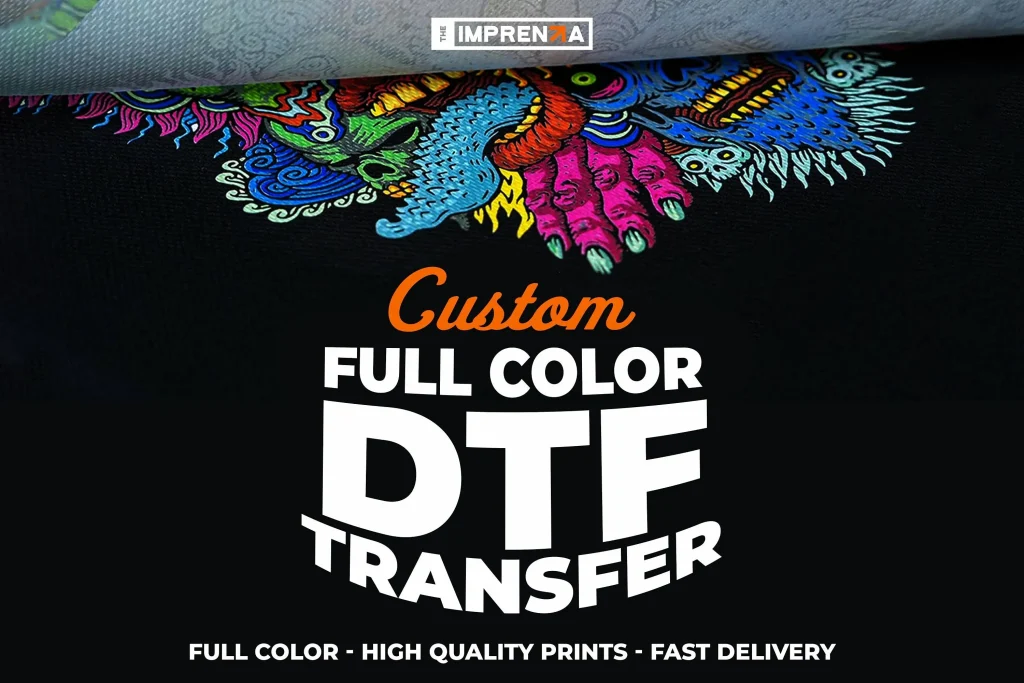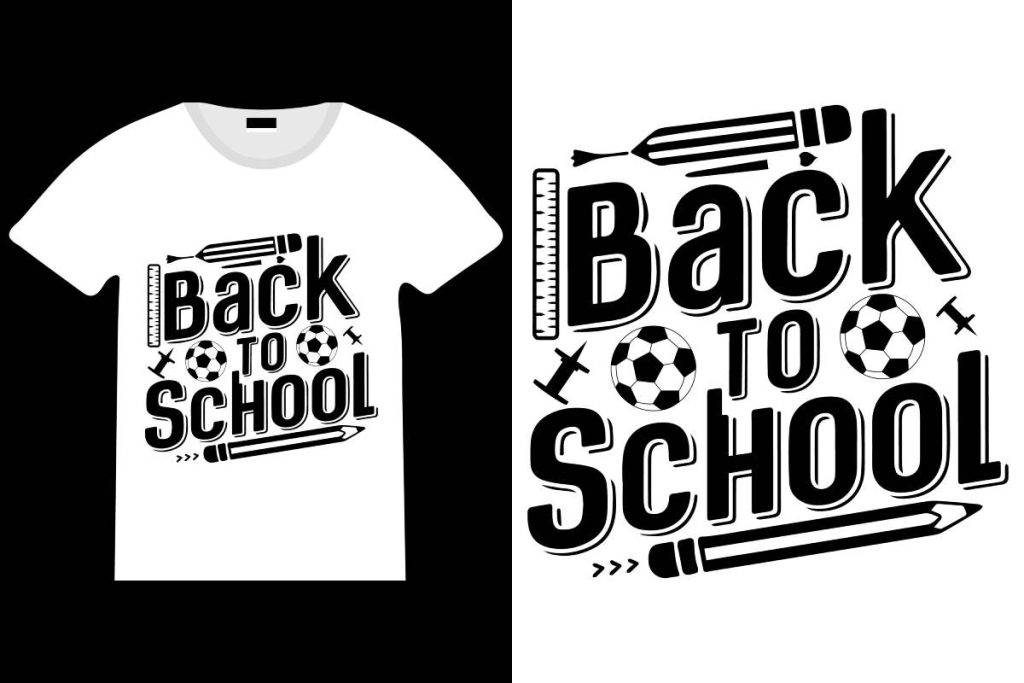In the ever-evolving realm of garment printing, DTF transfers have quickly become a popular choice for both newcomers and seasoned professionals. Despite their rising popularity, numerous myths about DTF printing persist, leading to misconceptions that could hinder users from exploring its full potential. One prevailing myth is that DTF printing is not durable, with many worrying that prints will fade after just a few washes. In this article, we will debunk these common misconceptions about DTF, shedding light on its impressive durability, versatility for various fabrics, effectiveness on dark clothing, and overall cost-efficiency. By clearing up these misunderstandings, we aim to empower both aspiring printers and established businesses to embrace DTF printing for their creative and commercial endeavors.
Direct-to-Film (DTF) technology has garnered increasing attention as an innovative method for printing on textiles, making it essential to clarify some of the common misconceptions surrounding it. This printing technique allows for vibrant and long-lasting designs on a variety of fabrics, proving itself to be a reliable option for custom apparel. However, the landscape of DTF printing is often clouded with myths, such as the belief that it is exclusively suited for cotton or that it is excessively complex for beginners to tackle. Additionally, many are misled by the notion that DTF transfers come with high costs compared to traditional methods like screen printing. Through this discussion, we aim to demystify DTF printing and help users appreciate its advantages across a range of applications.
Understanding DTF Transfers: The Key to Quality Printing
Direct-to-Film (DTF) transfers have revolutionized the garment printing industry, bringing high-quality results into the hands of both professionals and hobbyists. Understanding the essence of DTF technology is critical to appreciating its advantages over traditional methods. Unlike Direct-to-Garment (DTG) printing, which prints directly onto the fabric, DTF printing uses a specialized transfer film that allows vibrant designs to be printed on a film and then heat-pressed onto a variety of materials. This method not only enhances the quality of prints but also provides a more efficient and versatile approach to garment decoration.
One of the significant benefits of DTF printing is its ability to reproduce highly detailed designs with exceptionally vibrant colors. This technology is suitable for both light and dark fabrics, making it incredibly flexible for various applications—from custom apparel to promotional items. By investing time in mastering DTF transfers, users can tap into a wide range of creative possibilities, allowing elaborate prints that maintain their quality over time.
Debunking Durability Myths About DTF Printing
A common misconception about DTF printing is that its transfers lack durability, often leading potential users to doubt its viability for long-term use. However, this claim is easily debunked. With advancements in materials and inks, modern DTF transfers, when applied with the right techniques, are remarkably durable and can withstand numerous washes without significant fading or wear. This durability is comparable to, or sometimes even better than, traditional screen prints, allowing users to offer high-quality products with confidence.
It’s essential to consider quality factors such as the type of inks used and the correct application process. High-quality DTF transfers utilize strong adhesives and pigment inks that bond effectively with fabrics. Consequently, users can expect their prints to maintain vibrancy and durability, making DTF a reliable choice for those concerned about the longevity of their designs.
DTF Printing: Not Just for Cotton Fabrics
The myth that DTF printing is only suitable for cotton fabrics severely limits its perceived applicability. In truth, DTF technology has evolved significantly, allowing printers to use it on a broad spectrum of materials, including polyester, blends, and even nylon. This versatility is one reason why DTF has gained traction in the industry—it meets the diverse needs of consumers looking for customized solutions without being restricted to one type of fabric.
By understanding this flexibility, businesses can cater to a wider audience and enhance their offerings. For example, athletes and sports enthusiasts prefer polyester fabrics for their moisture-wicking properties. Utilizing DTF printing ensures that vibrant designs can be applied effectively, promoting the brand or message without compromising the garment’s performance.
Printing on Dark Fabrics: The True Capability of DTF
Another prevalent misconception around DTF printing is its ineffectiveness on dark fabrics. This notion often dissuades printers from exploring DTF for their dark-colored garments. However, with the advent of opaque white inks, DTF technology can deliver striking prints on any fabric, regardless of color. This capability empowers designers to unleash their creativity without the fear of diminished print quality.
The ability to print white ink beneath colored designs means that even intricate and colorful graphics can remain vibrant on dark backgrounds. This advancement significantly enhances DTF printing’s appeal, allowing businesses to tap into markets that specifically require applications on dark garments, ultimately broadening their customer base and product range.
Cost-Effectiveness of DTF Printing: A Real Advantage
Many potential users are led to believe that DTF printing is more expensive than traditional methods like screen printing. However, a closer examination reveals that this perception is often misguided. While certain DTF printers require a higher initial investment, the overall cost savings come in the form of lower setup fees and the ability to print shorter runs without significant financial penalties. This quality of DTF printing makes it an appealing option for small businesses and entrepreneurs looking to minimize costs while maximizing print options.
Moreover, DTF printing allows for less waste since it is possible to print exactly what is needed without excess, reducing material costs. This efficiency not only supports environmental considerations but also enhances the bottom line for businesses. As a result, many users find DTF printing to be a more economical solution over time, providing them with high-quality prints at competitive prices.
Clearing Up Common Misconceptions About DTF
In an industry characterized by rapid advancements and evolving technology, it’s crucial to separate fact from fiction regarding Direct-to-Film printing. By addressing common misconceptions—such as DTF’s durability, ease of use, and fabric compatibility—potential users can make informed decisions about whether this printing method meets their needs. Many myths stem from outdated information or a lack of understanding about modern innovations, leading to unwarranted skepticism.
To foster greater acceptance and utilization of DTF printing among beginners and seasoned professionals alike, it’s vital to highlight user experiences and industry studies that illuminate the true capabilities of this method. By embracing the reality of DTF printing, users can overcome their doubts and leverage this powerful tool to enhance their product offerings and meet customer demands effectively.
Frequently Asked Questions
What are the common myths about DTF transfers?
Several widespread myths about DTF transfers include beliefs that they aren’t durable, are complicated to use, or are limited to cotton fabrics. By debunking these misconceptions, it’s clear that DTF printing offers excellent durability, user-friendly technology, and compatibility with various fabrics beyond just cotton.
How durable are DTF transfers compared to other printing methods?
DTF transfers are often mistaken for being less durable than other methods. However, when produced with high-quality inks, they can match or surpass the longevity of traditional screen printing, maintaining vibrancy even after multiple washes.
Can DTF printing be used on fabrics other than cotton?
Absolutely! A common misconception is that DTF printing is only effective on cotton. In reality, DTF transfers work excellently on various materials, including polyester and fabric blends, making them suitable for a wide array of textile applications.
Are DTF transfers effective on dark colors?
Yes, many believe that DTF transfers can’t be used effectively on dark garments, but this is incorrect. Modern DTF printing technology utilizes opaque white inks that provide vibrant prints on dark fabrics, ensuring quality and visibility.
Is DTF printing more expensive than traditional screen printing?
Contrary to popular belief, DTF printing is not necessarily more expensive than screen printing. While initial costs for DTF printers may seem high, the overall cost efficiency can be better in the long term, particularly for short production runs.
What are some misconceptions about DTF printing technology?
Common misconceptions about DTF printing technology include beliefs that it is overly complicated to operate and that only certain fabric types should be used. Advances in technology have made DTF printing accessible, allowing users of all skill levels to create impressive designs.
| Myth Number | Myth Description | Reality |
|---|---|---|
| 1 | DTF Transfers Are Not Durable | DTF transfers can be highly durable if proper transfer films and inks are used, often matching the durability of traditional prints. |
| 2 | DTF Printing Is Too Complicated | Modern DTF printers are user-friendly, allowing newcomers to operate effectively within days. |
| 3 | DTF Printing Is Only for Cotton Fabrics | DTF is compatible with various fabrics, including polyester and blends, enhancing its versatility. |
| 4 | You Can’t Use DTF With Dark Colors | Modern DTF technology uses opaque white inks that ensure vibrant designs on dark fabrics. |
| 5 | DTF Printing Is More Expensive than Screen Printing | DTF can be cost-effective with lower setup costs and less crucial upfront investment than screen printing. |
Summary
DTF Transfers are revolutionizing the garment printing industry, helping to eliminate some key misconceptions that may hinder their adoption. From their impressive durability and versatility across various fabric types to the user-friendly operation and cost-effectiveness, it is clear that DTF transfers stand out as a robust printing option. As technology continues to improve, understanding these factual nuances will empower businesses and creators alike to incorporate DTF printing into their production processes, resulting in high-quality, vibrant prints that can cater to diverse demands.



